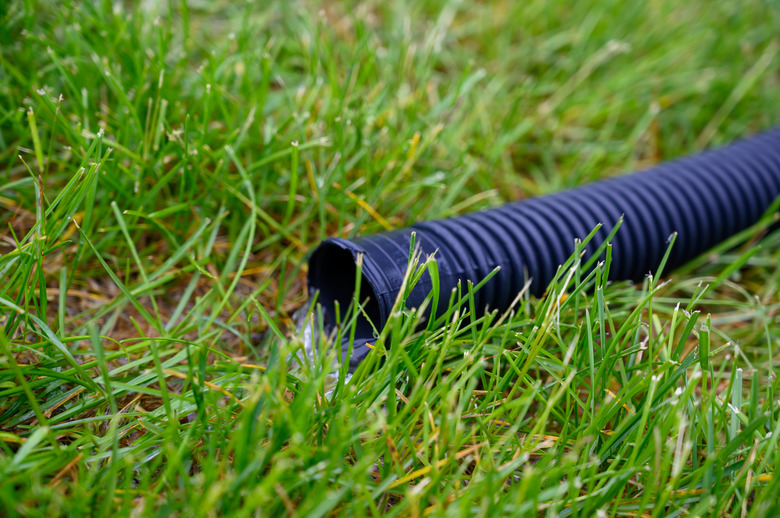How To Install An Underground Sump Pump Drain Line Outside A House
We may receive a commission on purchases made from links.
If your basement or crawl space is wet enough to need a sump pump, it's important to drain the discharge far away from the foundation (at least 20 feet). If you don't, the pumped water will just find its way back to the basement, undermining the foundation in the process.
Sump pumps typically discharge through a 1 1/2-inch pipe that passes the side of the house and empties into an underground drainage system that terminates with a bubbler, pop-up drain, dry well, or straight onto the ground (which pros call "out to daylight"). Installation is similar to that for a French drain, and it's best done by a pro because the trench needs to slope away from the house by at least 1/4 inch per foot to keep water flowing. It also needs professional planning to ensure the pump discharge doesn't run onto a neighboring property or into a septic field.
Planning and Digging the Trench
Planning and Digging the Trench
The minimum pipe diameter for this type of drainage system is 3 inches, but many landscapers recommend 4-inch PVC or poly pipe, and the trench needs to be wide and deep enough to accommodate it. A depth of 18 to 24 inches and a width of 6 to 8 inches are recommended. Ideally, the trench runs in a straight line, but it should also stay as far as possible from trees and shrubs to prevent root infiltration, so some bends may be inevitable.
When digging the trench, a good landscape company will set down tarps or plywood to catch the dirt, protect the lawn, and make backfilling easier. If the ground already slopes away from the house, which it should, the depth of the trench can be uniform, but if the ground is flat, the bottom has to be graded away from the house.
Laying the Drainage Pipe
Laying the Drainage Pipe
If the soil drains well enough, it's often advantageous to lay perforated drain pipe, which allows some of the discharge from the pump to percolate into the soil and reduces the amount that needs to be diverted at the other end. When using perforated pipe, landscapers usually line the trench with landscape fabric to prevent dirt from clogging the perforations, which should always be facing down. This isn't required when you use solid pipe.
Lengths of pipe go in one by one and are glued or fastened together and then backfilled with 3 or 4 inches of gravel for drainage. On the pump side of the drain, installers will use an elbow facing up to catch the discharge. There may also be an elbow on the opposite end, but if the system terminates in a dry well, the drainage pipe empties straight into that and doesn't need an elbow.
Connecting the Discharge Pipe to the Drain
Connecting the Discharge Pipe to the Drain
In cold climates, the discharge pipe doesn't connect directly to the drain because the frost cycle causes the underground pipe to rise and fall, and that would break the discharge pipe if it were attached. There are different ways to make the connection, and a common one is to glue a 4-inch sanitary tee with 4 x 2-inch bushing to the drain line and insert the 1 1/2-inch discharge pipe into the 2-inch opening. You then glue a downward-facing 4-inch street elbow to the sanitary tee, which acts as an overflow to prevent water from backing up into the house if the pipe freezes.
The most common way to terminate the drain line on the other end is to glue on a pop-up drain, which sits at ground level, pops up while it's discharging, and lowers again to keep the line sealed. Pop-up drains have a built-in elbow, and at the base is a weep hole that allows water to drain into the ground. It's often a good idea to dig a small dry well under this hole and fill it with gravel to allow water to disperse in the soil.
